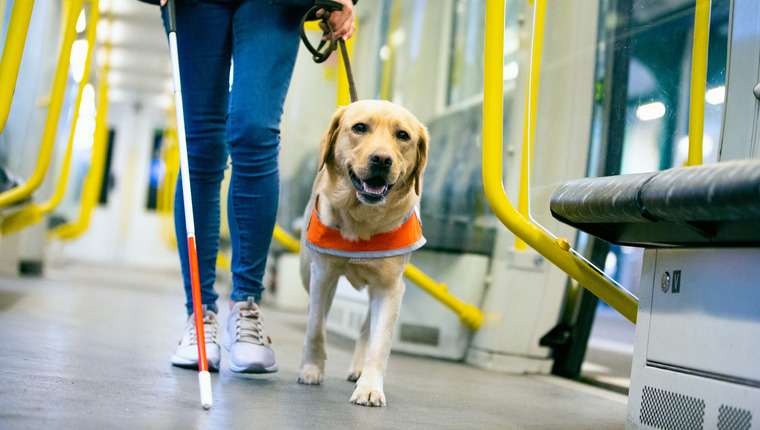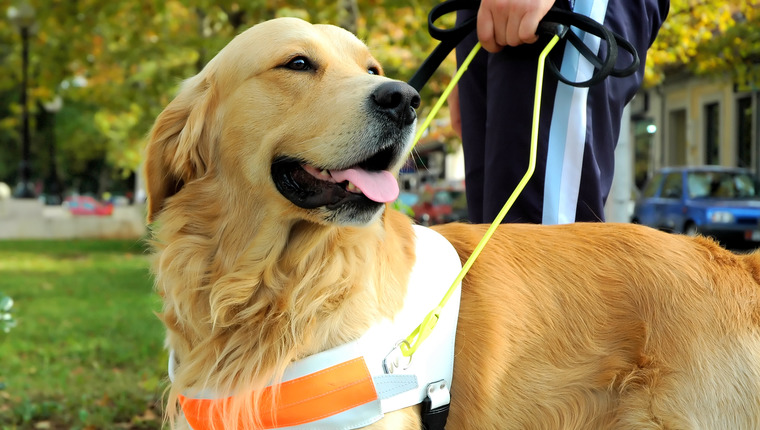
Earlier this month a Korean startup, AI Guided, revealed new AI-driven technology that could eventually replace guide dogs for the visually impaired.
At CES 2023 in Las Vegas, the company unveiled a belt equipped with “AI-powered on-device computing to identify obstacles and help with navigation”, according to TechCrunch. Instead of having to use a guide dog, the belt allows visually impaired users to navigate their surroundings hands-free.
Combining Several Technologies Into One Impressive Piece of Equipment
Interestingly, the AI Guided belt borrows technologies that most of us already recognize. For example, the belt uses physical sensations to communicate with users, a method called haptic feedback. Already common in game controllers and smartphones, the vibrations alert users to any oncoming hazards.
Additionally, the belt’s optic technology allows for advanced object identification. Many smartphones already use this technology for facial identification. Alongside the onboard AI computer, the belt has the potential to increase autonomy for the visually impaired.
The Technology Is Still in Early Development and Faces Competition
TechCrunch says the project is still in early development. Apparently, the project was conceived in January 2020, and the first prototype was built in 2021. Unfortunately, details about pricing and availability are scarce. However, the belt is expected to have an 8-hour battery life and full functionality “without WiFi or cellular data”.
As amazing as the idea seems, it’s not the only project in the works to replace guide dogs.
Other companies are applying AI technology to robot dogs, and with similar goals in mind. Recently, researchers at UC Berkeley modified a robot dog with lasers and special cameras to guide humans through indoor spaces. Fascinatingly, the project’s success has piqued curiosity as another alternative to live guide dogs.
Without a doubt, eventually, these technologies could increase access for the visually impaired. Specifically, it could be helpful to people who may not be able to afford a guide dog. However, the biggest obstacle to these new technologies may be the users themselves. For those who use them, guide dogs aren’t just tools; they’re essential companions and beloved pets. As such, many people probably wouldn’t be open to replacing their four-legged friends with robots and AI belts.







